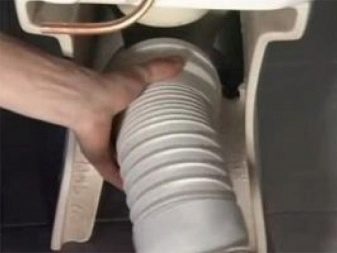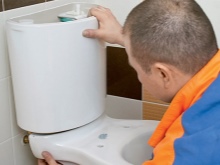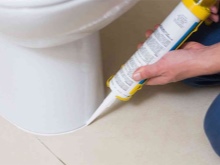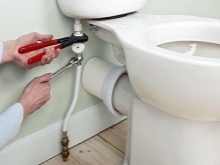Leaking toilet bowl - repair tips
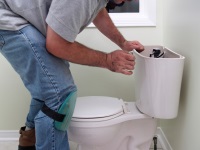
Leaking toilet - an unpleasantness in itself is rather small, and in urgent repairs not requiring, but over time it turns into a constant irritant factor for you and your neighbors. The incessant murmuring of water, especially well heard in the silence at night, not only does not calm, but on the contrary, can seriously act on the nerves. In addition, according to experts' calculations, with such a problem, up to two hundred liters of water can pour out of the cistern of the toilet per day, which increases the monthly payments on the meters by quite a large amount. In this article, we will tell you how to solve the problem yourself, without asking for help from a plumber.

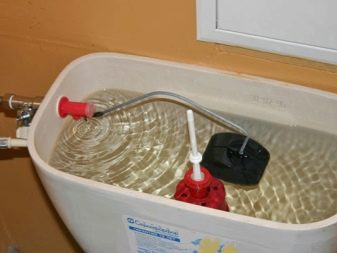
The structure of the toilet bowl
The basic elements of the design of the toilet bowl have not changed for decades. Changes affect only the materials used in the production, forms and methods of installation of sanitary equipment, but the structure itself remains the same. The main parts of the standard toilet bowl are the cistern, the bowl and the seat (or, as it is also called, the seat pan).
As a rule, the cause of failure in the structure lies precisely in the malfunction of the cistern. Inside it there is a mechanism that operates on the principle of a hydraulic valve, for the correct operation of which it is necessary to maintain a certain level of pressure.
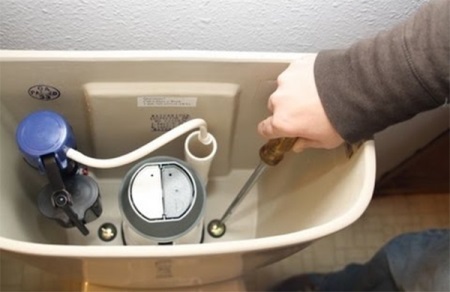
The mechanism of the cistern contains the following elements:
- A rubber bulb that unclogs the water drain;
- overflow - a pipe that drains excess water if the toilet bowl is defective;
- rod - the metal lever that actuates the flush mechanism;
- float - a sealed capsule made of plastic that regulates the water level in the cistern;
- float valve.
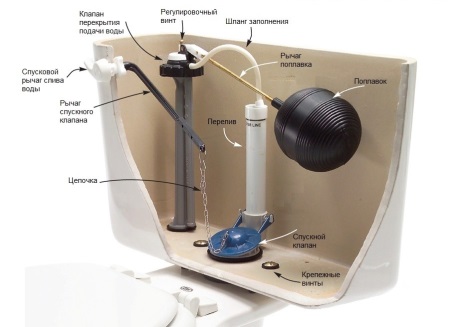
When we raise the traction (by pulling the lever or pressing a button), the drain mechanism comes into action: the pear rises and the water flows into the bowl through the drain hole. Then the valve opens, and the tank is filled with water - to the desired level.
Necessary tools for repair
In order to repair the breakage of the toilet bowl, you should prepare the following tools and consumables:
- silicone sealant for plumbing (in some cases it can be replaced by assembly foam);
- screwdriver set;
- hammer;
- twine or wire;
- sandpaper;
- burlap;
- a drill with a set of drills;
- angle grinder;
- pliers;
- knife;
- rubber gloves;
- In addition, you may need spare parts to replace those that have fallen into disrepair.
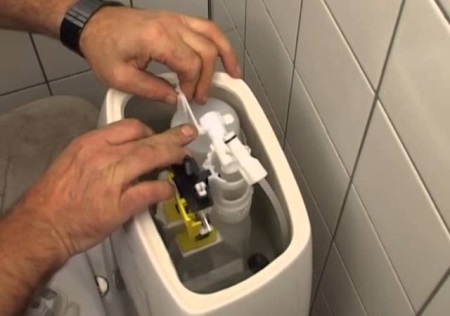
It is best to have this "emergency" kit at home at all times. This will help you troubleshoot the problem as quickly as possible - before the problem becomes more serious.
Possible malfunctions
A leaking cistern - this can occur for several reasons:
- damage to the float valve - if a hole appears in the float, it begins to draw water; you can fix this with sealant or simply by wrapping the float in cellophane;
- Incorrect float position - a skewed float can easily be corrected by hand, just wiggle it from side to side and the optimum position will be found by itself;
- wear and tear of the rubber bulb - in this case the product will have to be replaced;
- Lime deposits on different parts of the drain mechanism - lime does not allow the parts to fit tightly together, which causes malfunction of the drain mechanism; this problem can be solved by using special cleaning agents;
- The nut which secures the overflow at the bottom of the cistern is loose - in this case the fixing can be simply retightened;
- unreliable connection cistern and bowl - you may need to replace the collar that connects the two parts of the toilet bowl;
- wear and tear of the rubber gaskets - the seals are consumable material and must be replaced;
- damage to the cistern body - scratches and cracks are treated with a special compound for the restoration of sanitary ware;
- loose attachment of the water pipe - in this case you usually need to replace the fixing element.
Problems with the bowl. If the cause of leaking water is not in the cistern, then it is necessary to examine the bowl of the toilet bowl for damage. If you find a crack or chip that is leaking water, you will have to replace the bowl to avoid further problems. However, there is a temporary solution to the problem, which will help fix the leak for a short time (just long enough to buy a new bowl). To prevent the crack from growing, drill holes at both ends of it, necessarily through holes. Then, from the inside of the bowl, treat the damaged area with an angle grinder and apply a layer of epoxy. As a rule, mechanical damage to the bowl is visible at a glance, so if they are not found at once, the problem is most likely in something else:
The connection between the toilet bowl outlet and the water pipe has leaked. This can happen if the connection was fixed with cement mortar with sand. After some time cured putty begins to crack, resulting in a leak. To fix the situation, you need to carefully remove the remnants of the mixture from the sockets and reconnect them with a modern sealant or the same cement mortar, but without adding sand.
Worn out diaphragm, which should seal the connection corrugations. This happens quite often with rubber products - they become deformed or dry out. Usually this part can be easily replaced, but if for some reason it is impossible to do this, try to seal the connection with a sealant.
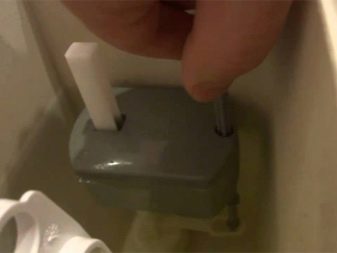

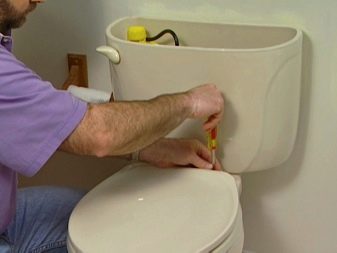
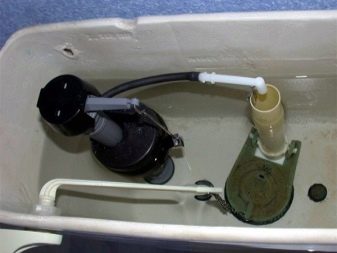
Repair of the cistern with your own hands
So, most often, the reason for the continuous flow of water lies precisely in the cistern of the toilet bowl. The reasons for this can be many - the most common ones we have already discussed above. In this section we will tell about how to fix the failure yourself:
- The reason in the valve. If the metal pin that holds the float lever in the valve is deformed, you should make a new one from a piece of copper wire - this material is considered more reliable. If, however, the hole in which the stud is attached has increased - then the repair is useless here, you will have to buy a new valve.
- The reason is in the fasteners. Quite often corroded bolts, tightening the fastening of the cistern and the shelf of the toilet bowl. To replace the fasteners, you will need to completely disassemble the cistern, first draining the water and disconnect it from the water pipes. Unscrew the bolts, disconnect the rubber sleeve, drain the remaining water. Replace the collar with a new one. Reassemble the construction, using new bolts - it is recommended to choose products made only of brass.
- The cause is in the pear. As mentioned above, a deformed primer is best replaced. If there is no such a possibility, you can resort to a temporary solution: take out the old pear and stuff it with any improvised material, such as burlap, so that it took its former shape.
As you've probably been able to make sure, independent repair of leaky toilet - a task quite feasible. It is enough only to correctly determine the cause of this trouble and have the necessary tools at hand. In this case, you will spend a few minutes to fix the problem.
